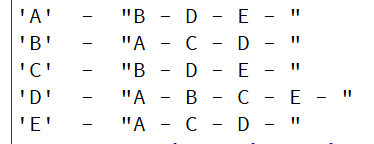图有多种储存结构,邻接表、邻接矩阵是常用的。
一、邻接矩阵存储结构
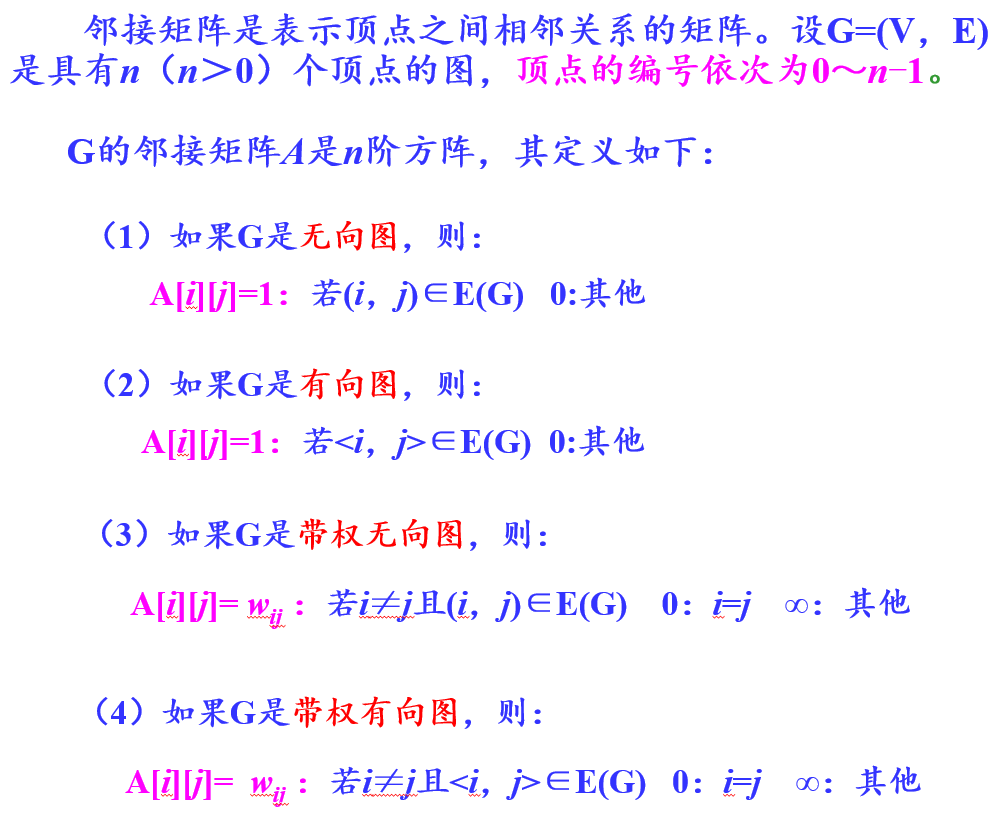
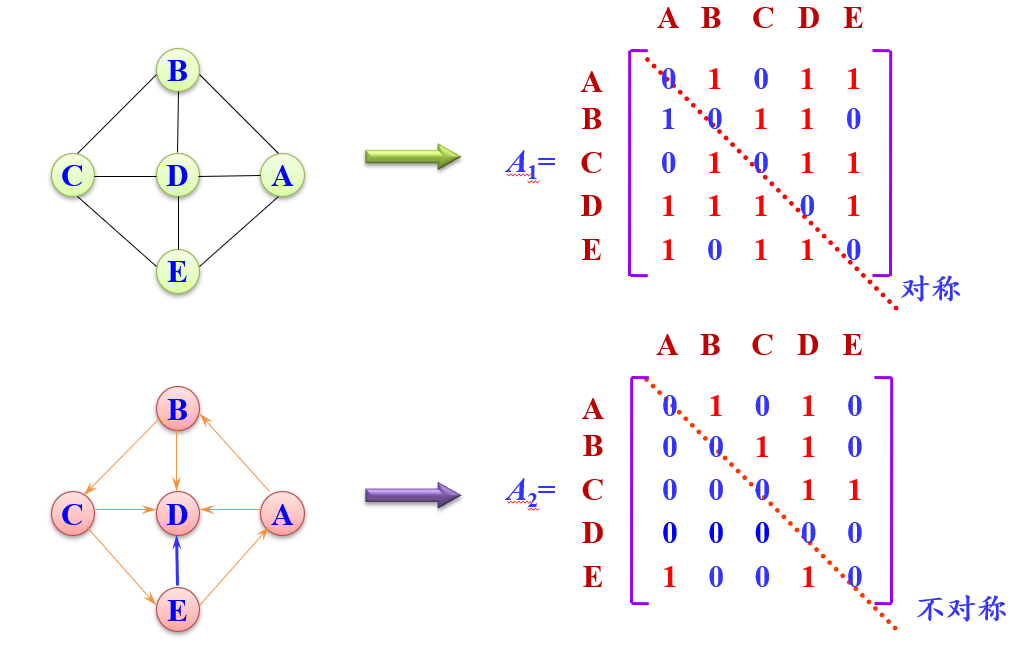
二、邻接表存储结构
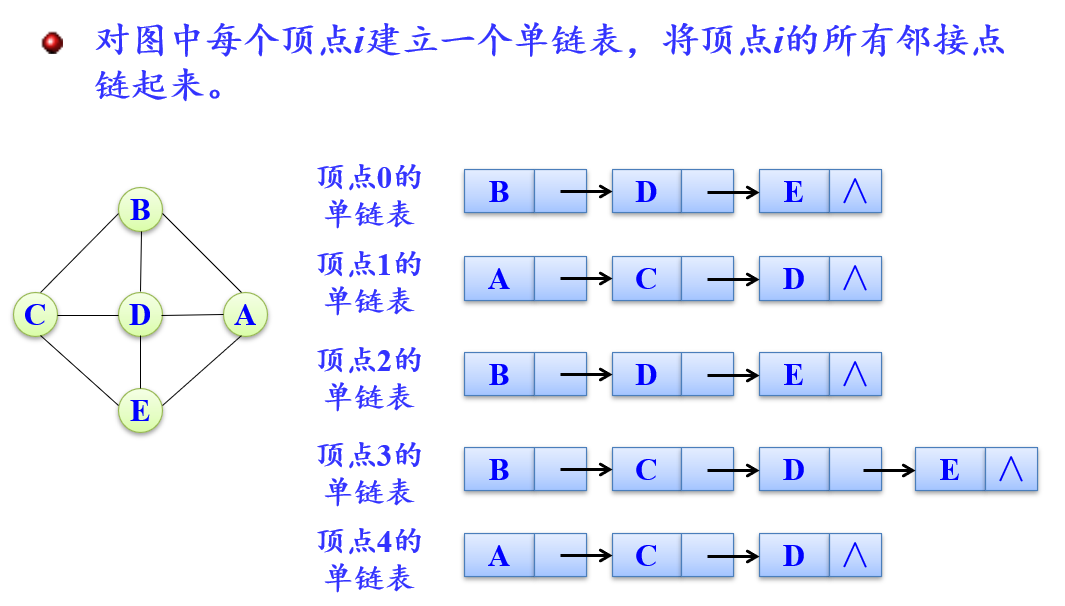
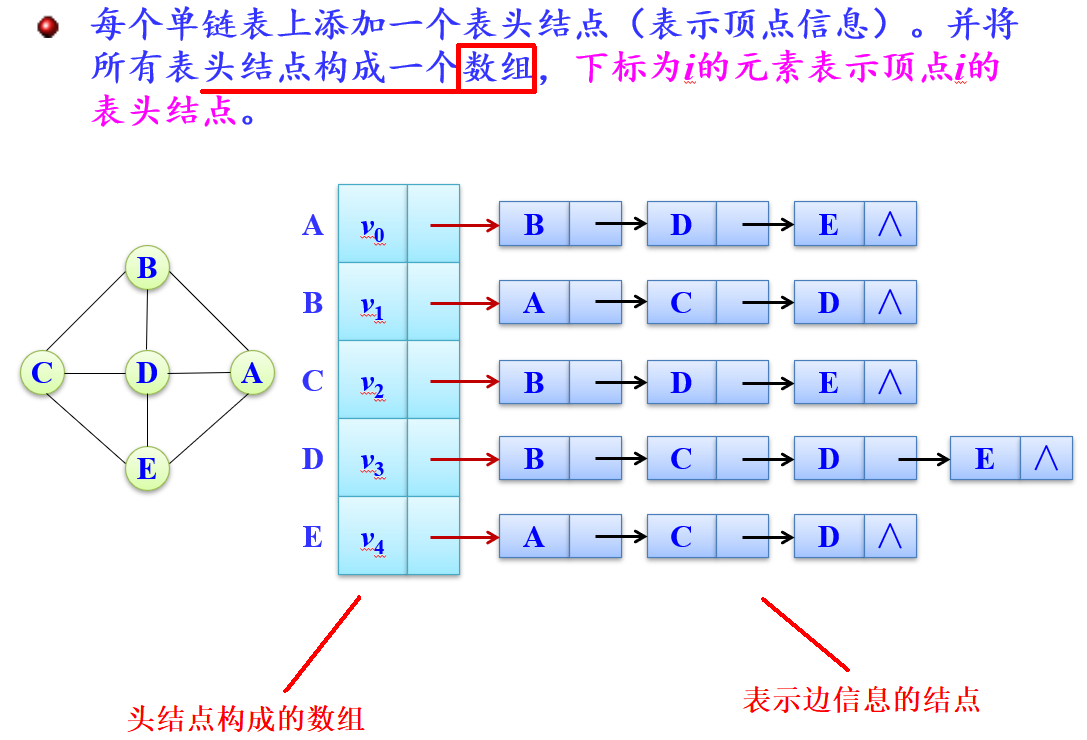
示例:
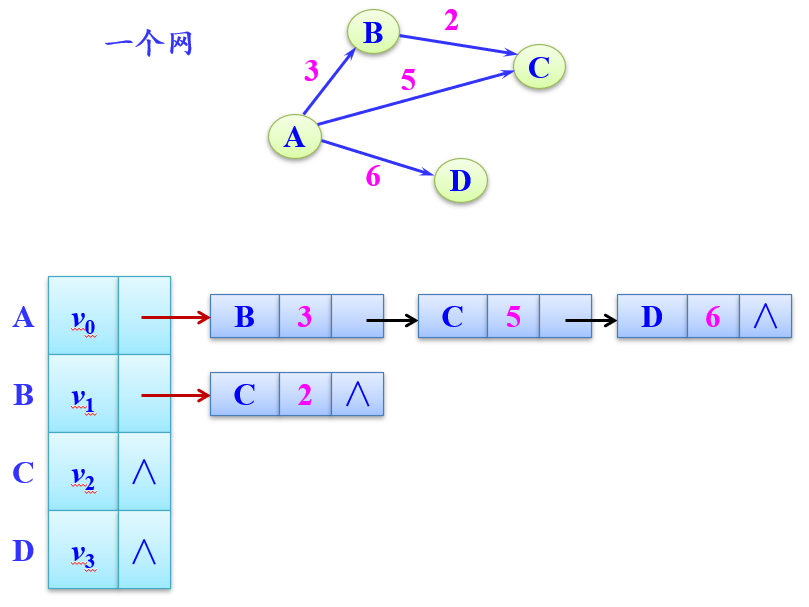
1、定义结构
#define elementType QChar
#define MAXV 5
//边结点
struct ArcNode
{
elementType advex; //终点编号
struct ArcNode * nextarc{nullptr}; //指向下一条边的指针
QJsonObject info; //该边的权值等信息
};
//头结点类型
struct VNode
{
elementType data; //顶点信息
ArcNode * firstarc{nullptr}; //指向第一条边
};
//图的邻接表类型
struct AdjGraph
{
VNode adjlist[MAXV]; //邻接表
int arcnode_number; //边数
};2、创建邻接表
//创建图的邻接表
void CreateAdj(AdjGraph * & G,
int A[MAXV][MAXV],
elementType nodeName[MAXV],
int arcnode_number)
{
G = new AdjGraph;
for (int i = 0;i < MAXV;++i)
{
for (int j = MAXV - 1;j >= 0;--j)
{
if (A[i][j] != 0) //存在一条边
{
ArcNode * p = new ArcNode;
p->advex = nodeName[j]; //存放邻接点
p->nextarc = G->adjlist[i].firstarc; //采用头插法插入结点p
G->adjlist[i].firstarc = p;
}
}
G->adjlist[i].data = nodeName[i];
}
G->arcnode_number = arcnode_number;
}3、输出邻接表
//输出邻接表G
void DispAdj(AdjGraph *G)
{
for (int i = 0;i < MAXV;++i)
{
ArcNode * p = G->adjlist[i].firstarc;
QString str;
while (p)
{
str.append(p->advex).append(" - ");
p = p->nextarc;
}
qDebug()<<G->adjlist[i].data<<" - "<<str;
}
}4、销毁邻接表
//销毁邻接表
void DestroyAdj(AdjGraph *& G)
{
for (int i = 0;i < MAXV;++i)
{
if (ArcNode * pre = G->adjlist[i].firstarc)//指向第i个单链表的首结点
{
ArcNode * p = pre->nextarc;
while (p)
{
delete pre;
pre = p;
p = p->nextarc;
}
delete pre;
}
}
delete G;
G = nullptr;
}5、使用
int arr[MAXV][MAXV] = {{0,1,0,1,1},
{1,0,1,1,0},
{0,1,0,1,1},
{1,1,1,0,1},
{1,0,1,1,0}};
AdjGraph * G{nullptr};
elementType nodeName[MAXV] = {'A','B','C','D','E'};
CreateAdj(G,arr,nodeName,8);
DispAdj(G);
DestroyAdj(G);